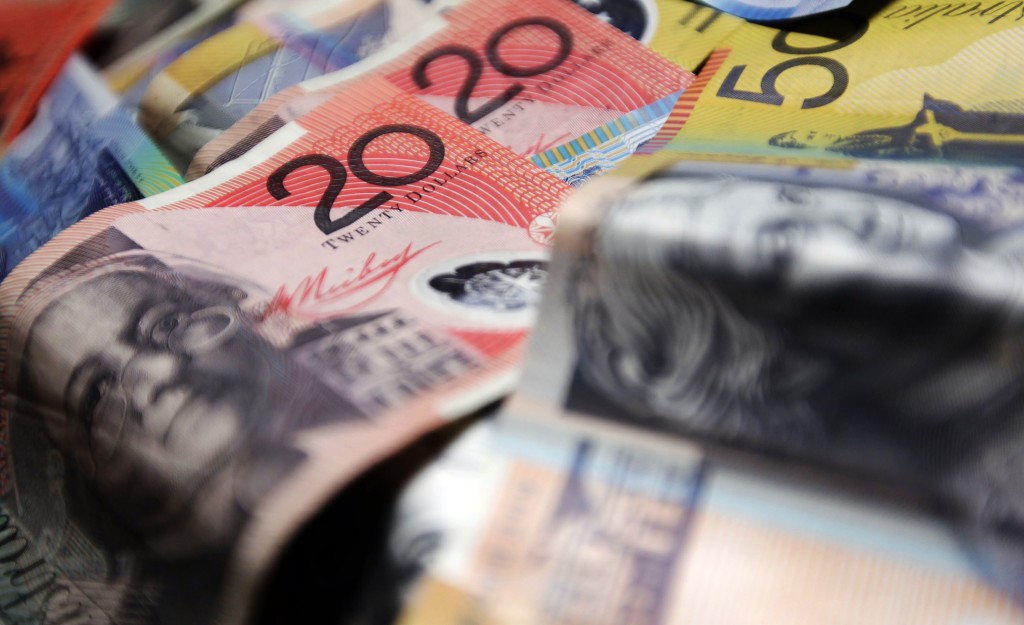Here are the key factors to keep in mind today for Australian Dollar trades:
- Australian AiG Performance of Manufacturing Index: The Australian AiG Performance of Manufacturing Index for November was reported at 51.3. Forex traders can compare this to the Australian AiG Performance of Manufacturing Index for October which was reported at 58.3.
- Australian CBA Manufacturing PMI: The Final Australian CBA Manufacturing PMI for November was reported at 54.6. Forex traders can compare this to the previous Australian CBA Manufacturing PMI for November which was reported at 54.5.
- Australian CoreLogic House Prices: Australian CoreLogic House Prices for November decreased by 0.9% monthly. Forex traders can compare this to Australian CoreLogic House Prices for October which decreased by 0.6%.
- Australian TD Securities Inflation: Australian TD Securities Inflation for November was reported flat at 0.0% monthly and increased by 1.6% annualized. Forex traders can compare this to Australian TD Securities Inflation for October which increased by 0.1% monthly and by 1.9% annualized.
- Australian ANZ Job Advertisements: Australian ANZ Job Advertisements for November decreased by 0.3% monthly. Forex traders can compare this to Australian ANZ Job Advertisements for October which increased by 0.2% monthly.
- Australian Inventories and Company Operating Profits: Australian Inventories for the third-quarter were reported flat at 0.0% quarterly and Australian Company Operating Profits increased by 1.9% quarterly. Economists predicted an increase of 0.4% and of 2.8%. Forex traders can compare this to Australian Inventories for the second-quarter which increased by 0.6% quarterly and to Australian Company Operating Profits which increased by 2.0% quarterly.
- Australian Building Approvals: Australian Building Approvals for October decreased by 1.5% monthly and by 13.4% annualized. Economists predicted a decrease of 1.5% monthly and of 14.0% annualized. Forex traders can compare this to Australian Building Approvals for September which increased by 3.3% monthly and which decreased by 14.1% annualized.
- Chinese Caixin Manufacturing PMI: The Chinese Caixin Manufacturing PMI for November was reported at 50.2. Economists predicted a figure of 50.1. Forex traders can compare this to the Chinese Caixin Manufacturing PMI for October which was reported at 50.1.
- Australian RBA Commodity Index: The Australian RBA Commodity Index for November increased by 14.9% annualized. Forex traders can compare this to the Australian RBA Commodity Index for October which increased by 13.1% annualized.
Here are the key factors to keep in mind today for Japanese Yen trades:
- Japanese Company Profits and Japanese Company Sales: Japanese Company Profits for the third-quarter increased by 2.2% and Japanese Company Sales increased by 6.0%. Forex traders can compare this to Japanese Company Profits for the second-quarter which increased by 17.9% and to Japanese Company Sales which increased by 5.1%. Japanese Capital Spending for the third-quarter increased by 4.5% and Japanese Capital Spending excluding Software increased by 2.5%. Economists predicted an increase of 8.5% and of 10.7%. Forex traders can compare this to Japanese Capital Spending for the second-quarter which increased by 12.8% and to Japanese Capital Spending excluding Software which increased by 14.0%.
- Japanese Loans & Discounts: Japanese Loans & Discounts for October increased by 3.30% annualized. Forex traders can compare this to Japanese Loans & Discounts for September which increased by 3.53%.
- Japanese Nikkei Manufacturing PMI: The Final Japanese Nikkei Manufacturing PMI for November was reported at 52.5. Forex traders can compare this to the previous Japanese Nikkei Manufacturing PMI November which was reported at 51.8.
- Japanese Vehicle Sales: Japanese Vehicle Sales for November increased by 8.3% annualized. Forex traders can compare this to Japanese Vehicle Sales for October which increased by 13.0% annualized.
Should price action for the AUDJPY remain inside the or breakdown below the 83.450 to 84.000 zone the following trade set-up is recommended:
- Timeframe: D1
- Recommendation: Short Position
- Entry Level: Short Position @ 83.800
- Take Profit Zone: 80.600 – 80.800
- Stop Loss Level: 84.500
Should price action for the AUDJPY breakout above 84.000 the following trade set-up is recommended:
- Timeframe: D1
- Recommendation: Long Position
- Entry Level: Long Position @ 84.150
- Take Profit Zone: 85.400 – 86.200
- Stop Loss Level: 83.800
Open your PaxForex Trading Account now and add this currency pair to your forex portfolio.

